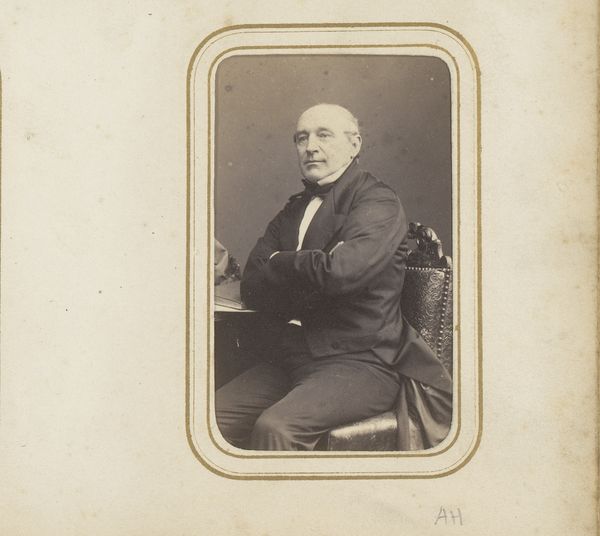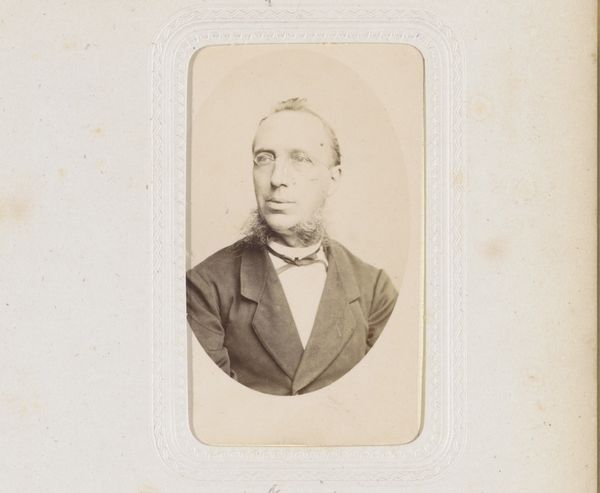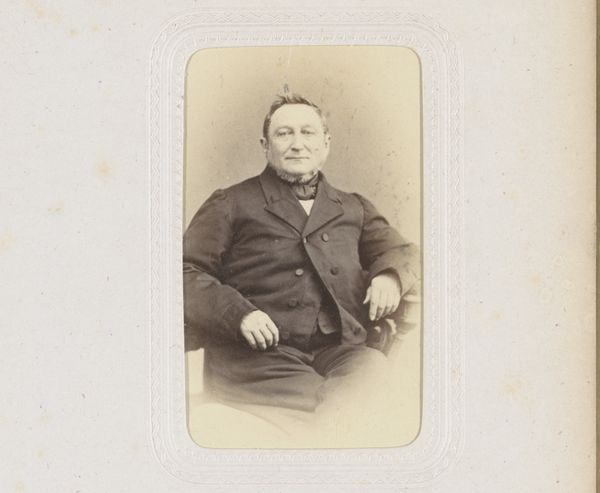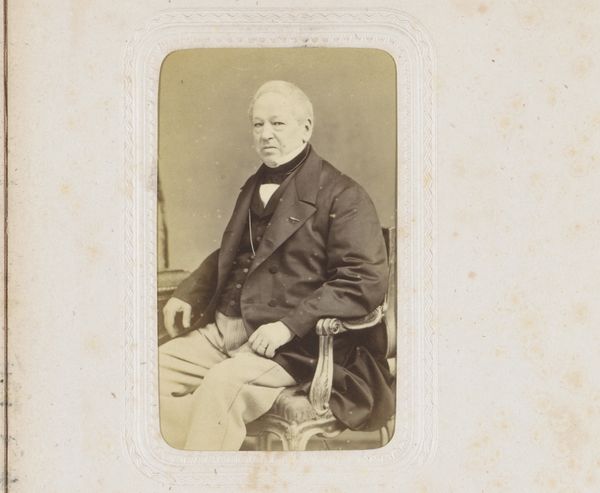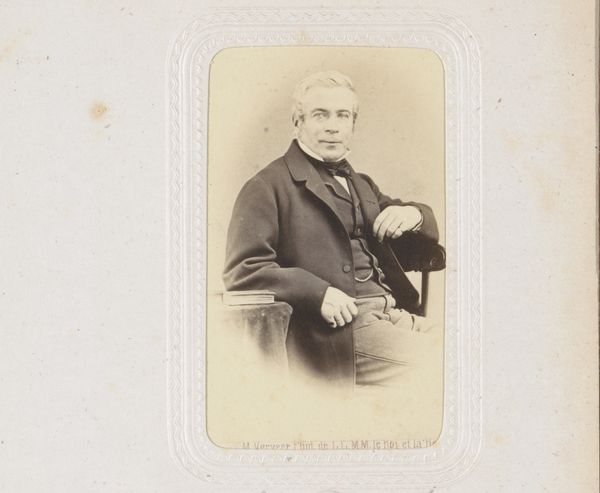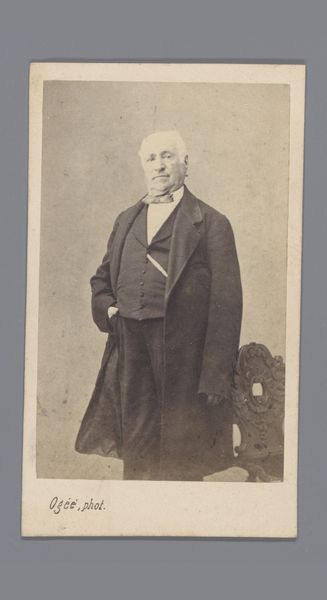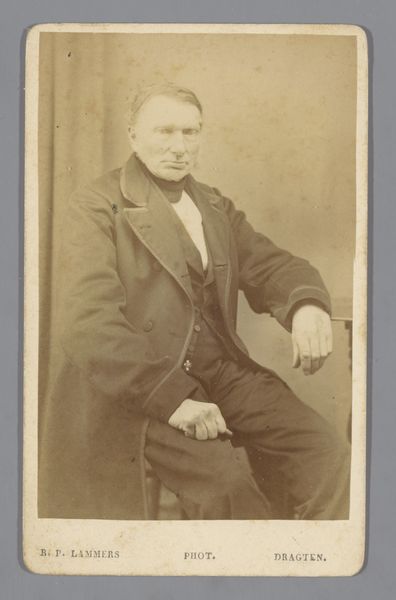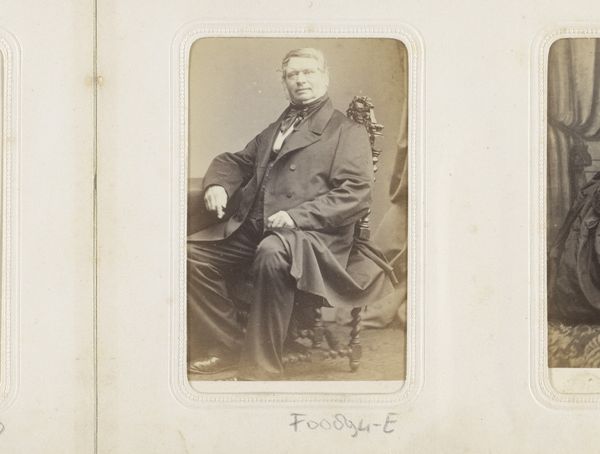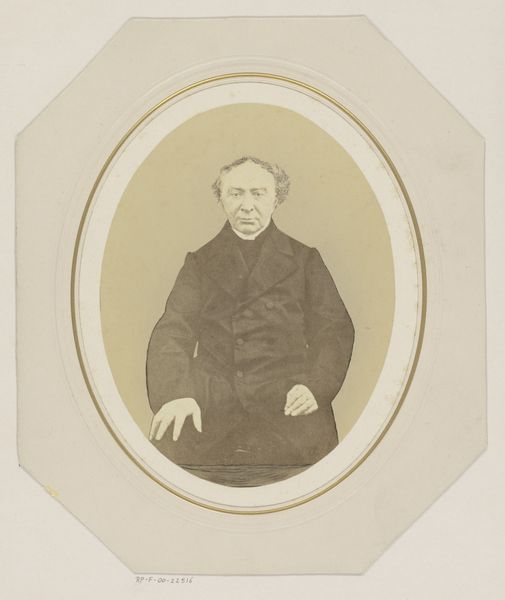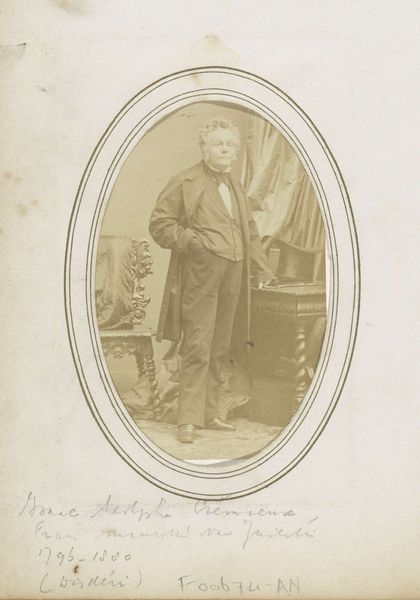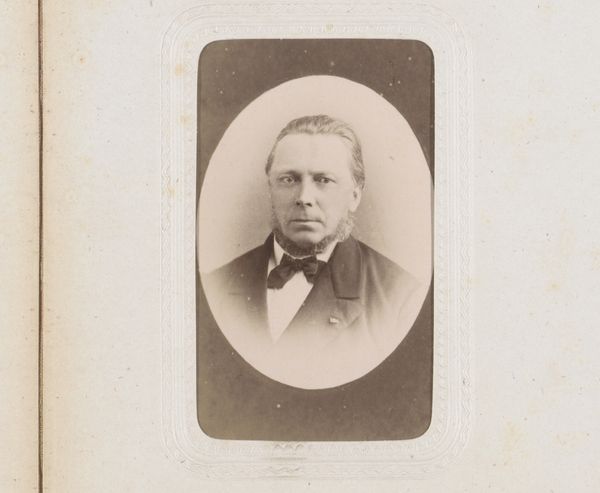
Dimensions: height 82 mm, width 50 mm
Copyright: Rijks Museum: Open Domain
This is Henri Pronk’s portrait of a seated man, referred to as Francken, made sometime in the mid-19th century. In the 1800s, photography emerged as a powerful tool for representation, yet who had access to this technology was often dictated by class and gender. Pronk’s portrait captures a man of privilege, likely part of the Dutch bourgeois, evident in his formal attire and the trappings of wealth. This was a time of shifting social structures, where the burgeoning middle class sought ways to assert their status. Photography provided them a means to mirror the visual language of aristocracy. I wonder about the act of sitting for a portrait then. What did it mean for the sitter to project an image of power and respectability? How did this interplay with the photographer’s own position in society? The portrait reflects the emotional landscape of a society grappling with new definitions of identity and status. It is not just a picture, but a narrative of ambition, social mobility, and the desire for recognition.
Comments
No comments
Be the first to comment and join the conversation on the ultimate creative platform.

